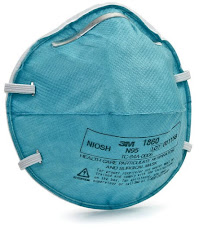The face mask became ubiquitous during the covid-19 pandemic, but its history dates long before it became one of the most politically charged controversies of 2020. In fact, it was well-known and widely used by both medical personnel and the public during the 1918 flu pandemic and also became common in China and Korea during the SARS outbreak.
 |
| Red Cross nurses wearing face masks during 1918 pandemic |
But it had made an appearance centuries ago, as long back as the 1600s. Thanks to the miasma theory of disease, which attributed diseases to bad air, people often tried to protect themselves with cloth coverings on their faces during epidemics or while tending to the sick. The idea was the same as today's mask use but without an understanding of germs. This was most stark during the various plague outbreaks. Plague masks became common in the 1600s and were worn by doctors while treating the infected. The plague masks were however, rather comical with long elongated beaks and two nostril ports that could be loaded with intense to get rid of the bad air or stench that was believed to be causing the plague.
 | |
|
Surgical masks first appeared at the end of the 19th century, around 1897, when doctors started wearing masks -- makeshift cloth mouth covering -- to prevent droplets from coughs and sneezes from entering patient wounds during surgery; therefore, they mostly only covered the mouth.
 |
| Early versions of the surgical mask |
For much of the 19th century, loose fitting cloth masks that were the equivalent of modern surgical masks were used, but the N-95 mask or respirator was born in 1911 during the Manchurian Plague. In a power struggle to control the devastating outbreak that was spreading rapidly with 100% mortality, both Russia and Imperial China poured resources into studying the apocalyptic disease. It was a Cambridge educated Chinese doctor, Lien-teh Wu, who first identified that the disease was spreading through the air (and not fleas on rats as widely believed). Drawing inspiration from surgical masks he had seen in Europe, he developed a multi-layered face mask using gauze and cotton that not only served as a physical barrier but also filtered the inhalation. It quickly gained a loyal following among doctors and the public alike, and within months had earned an iconic status around the world.
 |
| Precursor to the N-95 respirator mask from 1911 |
The modern N-95 respirator is derived from Wu's design. 3M, the leading innovator of masks, began mass producing these masks during World War I and later WWII, not for medical use but for industrial use at first. Through several refinements over the years, they arrived at the modern version that uses both mechanical and electrostatic filtering to stop particles as small as 0.02 microns (roughly the size of the SARS-CoV-2 virus). That is why masks will in fact help protect from covid-19 when worn correctly and diligently.
 |
| 3M N-95 mask used during the 2020 covid-19 pandemic |
Sources
https://eurjmedres.biomedcentral.com/articles/10.1186/s40001-020-00423-4
https://www.bloomberg.com/opinion/articles/2020-04-10/medical-face-masks-an-illustrated-history#xj4y7vzkg
https://write.as/deyner1984/face-masks-history-from-ancient-times-to-present-days
https://www.fastcompany.com/90479846/the-untold-origin-story-of-the-n95-mask
Comments
Post a Comment